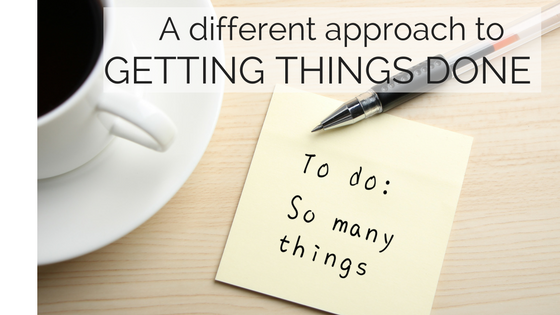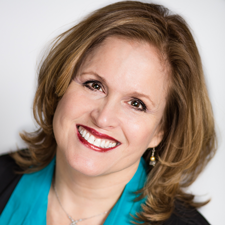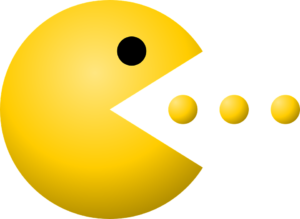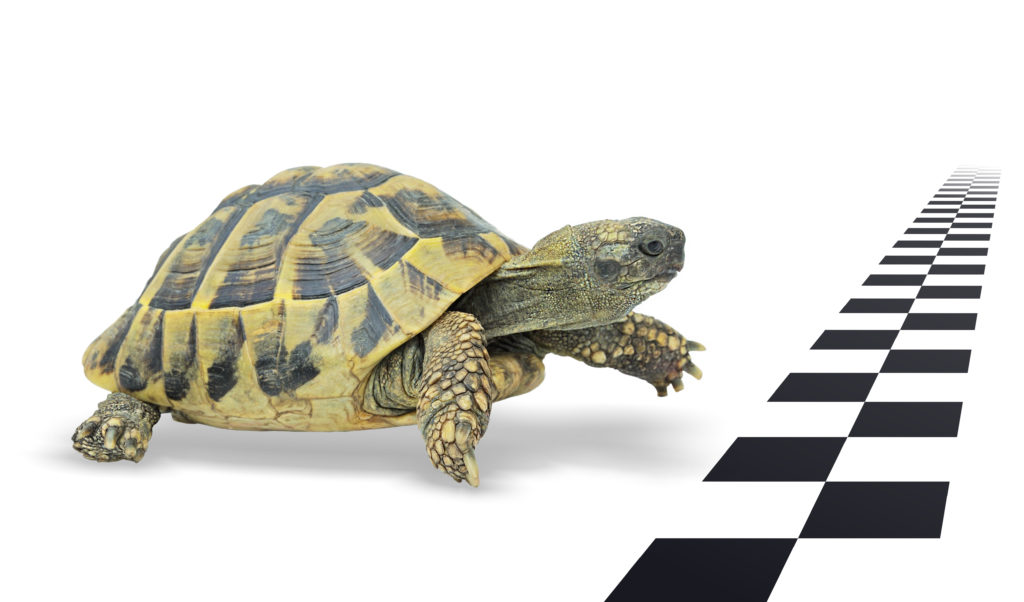
A Different Approach to Getting Things Done
Most of us feel overwhelmed by the many important, but not always urgent, tasks and projects that we need/want/have to or should do. We’re frustrated and stressed by our failure to get it all done.
What gets in the way? It isn’t necessarily a lack of motivation that’s holding us back, but the challenges that come from a lack of time and/or clarity:
- What to do – conflicting priorities because there are just too many options
- When to do it – lack of time to do it all (we’re not always realistic about our time and energy!)
- How to get it done – confusion about how to accomplish a task or project
Other action-stoppers include:
- Procrastination, due to the lack of a pressing deadline or consequence
- Avoidance of tasks that are particularly difficult or boring
- Inability to activate, or just get started (begin stuck in the ‘off’ position)
- Time blindness that leads to poor planning – it’s either now, or not now
So, How DO We Get Anything Done?
Many people, especially those with ADHD, are ‘burst workers.’ It takes us so long to activate, that when we finally get going on something, we want to get all of the mileage we can. So we wait until the last minute then shift into hyperfocus mode, then get so caught up in what we’re doing that it’s hard to stop. It helps when there’s a deadline, as there are no longer conflicting priorities, and the adrenaline (think stimulant) is naturally flowing, helping with concentration.
But what if there isn’t a deadline? What if it is a project that’s important, but not urgent?
Start by Making the Project Do-Able… and Avoid Overwhelm
Projects can be complicated, and often involve many steps that can take a lot of time to complete. Just thinking about a project (instead of an individual task) can lead to feeling overwhelmed. Our protective brain perceives overwhelm as a threat, triggering the ‘fight, flight or freeze’ response. So instead of the increased clarity and focus we need to get things accomplished, we’re more likely to escape into avoidance mode.
The only way a project becomes do-able is when it’s broken down into tasks (individual components). Tasks allow you to focus on doing just one thing at a time. Yet sometimes, accomplishing even a single task can be challenging.
Think about it: How do you eat an elephant? Bite-by-bite. How does Pac-Man win? Byte-by-byte. How do you tackle a project, bit by bit, step-by-step or task-by-task!
Enter the Tortoise Approach… Slow and Steady Wins the Race
How to Overcome Avoidance, and Cross the Finish Line (Get it Done!)
Start by choosing one very specific task (or mini-project) that will help you accomplish your project or long-term goal.
- If your project is to send out weekly blogs, your task is to write one blog
- If your project is to declutter your office, your task is to organize your desktop.
- If your project is to find a new job, your task is to update your resume.
You can put the task on your calendar as a Task-Appointment (an appointment with yourself to accomplish a specific task at a specific time).
But putting it on the calendar doesn’t mean you’ll get it done.
We’re most likely to complete things when there’s a looming deadline with consequences, when it’s a task we really enjoy, or if we’re trying to avoid something that’s even less appealing! Otherwise, so many things can get in the way, and we wind up with a large number of important tasks that we never seem to get around to completing.
So make the task more do-able by making it even smaller:
- Instead of writing a blog, jot down your ideas for the blog.
- Instead of organizing your desktop, clear the space around your keyboard.
- Instead of updating your resume, make a list of your job responsibilities.
The smaller the task, the more likely you’ll be to do it – especially if you’ve assigned a time to work on it.
Slow down and limit the amount of time you work on the task (so you’re more willing to do it!)
- These are the tasks that you haven’t been able to accomplish burst-working, so try a different approach – don’t try to get it all done in a day. Think progress, not immediate completion. (Also, be wary of perfection, which is often the enemy of progress).
- Assign just 20 minutes to the task, or if that seems like too much effort, go for 15 minutes… or even 10.
- The goal is to make your task-time short enough that you’ll actually get to it. You can do almost anything for 10 minutes! Don’t worry about finishing the task (unless you are on a deadline). The way you’ll finish is with consistent effort.
Like the tortoise, keep plodding onward.
Studies show that authors complete more books when they write for ten minutes a day than when they wait for the time and inspiration to do burst-writing sessions.
Commit to working on your task, or other parts of the project, on a regular basis (every day, four times a week, or whatever makes sense for you).
Even if you absolutely don’t feel like it, or you’ve been swamped by other, more pressing tasks, by carving out these short but regular sessions to work on tasks related to that important, but neglected project, you will get it done!

Susan Lasky
Productivity, ADD/ADHD & Organization Coach at Susan Lasky Productivity Solutions
Susan Lasky helps people who are overworked, overwhelmed or disorganized to get things done by working with the way they think. For more than 25 years she’s helped them find the right tools and strategies to better manage their time, priorities, paperwork, projects, space and stuff, so they gain more time, energy and focus to grow their business, succeed in school or the workplace, balance work/home/self-care and truly live a life they love!
Susan is a Board Certified Coach, Senior Certified ADHD Coach, Edge-Certified Student Coach and Level II Specialist in Chronic Disorganization, as well as a trained Organizer-Coach and Office Productivity & Systems Consultant, certified Career & Life Planning Specialist, Holistic Time Mastery Coach, and a Golden Circle member of NAPO, National Association of Productivity and Organizing Professionals.




